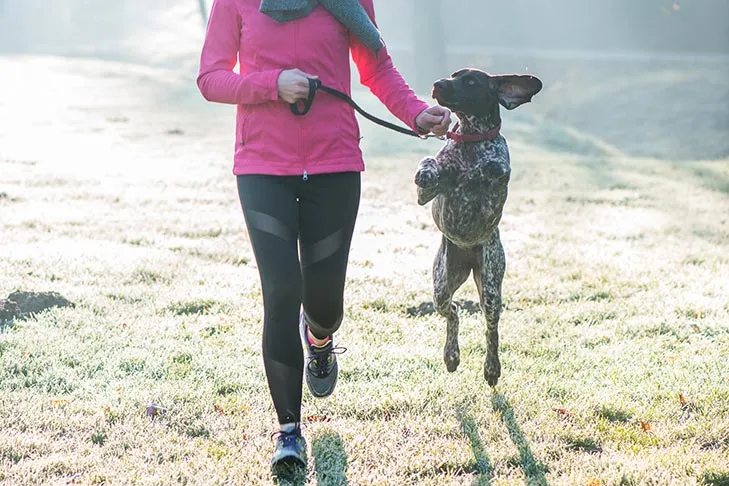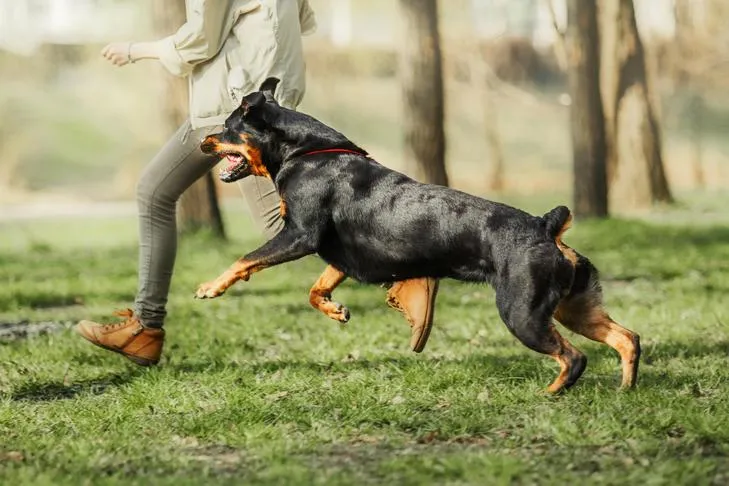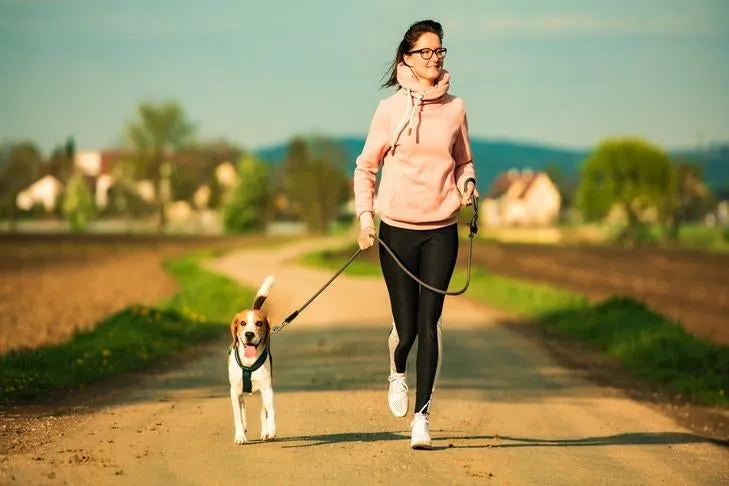Running with your dog offers a fantastic opportunity to deepen your bond while boosting both your physical and mental well-being. Regular canine fitness is vital for your dog’s overall health, and having a consistent running partner can be a powerful motivator for you too. Before embarking on this exciting journey to train your dog to be the perfect running companion, it’s essential to understand the best practices for a safe and successful experience. This guide will walk you through the necessary steps on how to get your dog to run with you, ensuring a rewarding activity for both of you.
Is Your Dog Ready to Run? Breed and Age Considerations
Before you begin any running program, it’s crucial to assess if your dog is physically suited for the activity. While many dogs enjoy running, not all breeds are built for long distances or high intensity. Additionally, running is generally not recommended for puppies, as their bones are still developing and excessive impact can cause damage. For most breeds, it’s best to wait until your dog is at least 1.5 years old before introducing them to running routines.
Beyond breed, every dog has a unique personality and temperament. Some dogs will naturally take to running with enthusiasm, while others might prefer a more leisurely pace. Observe your dog’s natural energy levels and consult with your veterinarian for a thorough physical checkup. This ensures that running is a safe and appropriate activity for their specific health status and physical condition.
 German Shorthaired Pointer running with a woman in the early morning.
German Shorthaired Pointer running with a woman in the early morning.
Mastering the Basics: Loose-Leash Walking
A fundamental step in how to get your dog to run with you is to first master loose-leash walking. A dog that constantly pulls on the leash can be frustrating during a walk, but it becomes outright dangerous at faster speeds. When you’re running, a sudden lunge from your dog can easily trip you or cause injury. The environment is full of exciting distractions like squirrels, interesting scents, and other dogs, so your dog needs to learn to focus on you.
To teach loose-leash walking, aim for the leash to hang in a gentle “J” shape without tension. You need to be as rewarding as the environment. Use high-value treats, favorite toys, or enthusiastic praise to positively reinforce your dog whenever they maintain a slack leash. Consistency is key, rewarding them the moment you feel slack. If you’re struggling with a dog that pulls, specific training techniques like stopping every time they pull can be very effective, helping you teach your dog not to pull on walks.
It’s also essential to train your dog to stay consistently on one side of you. Whether you choose the left or the right, stick to that side. If your dog weaves in front of you or from side to side, they can easily cause you to trip or tangle your legs in the leash, especially when you are moving quickly. Begin this training at a walking pace, focusing on reward placement. Always deliver treats to your dog in the exact position you want them to hold. For example, if you want them on your left, always offer treats at your left leg. Once they’ve mastered one side, you can introduce a new cue to train them for the other side if desired. Consider using a hands-free dog leash, which can make running together more comfortable and safer by allowing you to maintain better balance.
Introducing Speed Cues for Running
Once your dog reliably walks politely by your side, it’s time to incrementally increase your pace. Having distinct verbal cues is incredibly helpful for clear communication during your runs. While a cue like “let’s go” might signal a general forward movement during a walk, a different cue such as “get running” or “move it” can be used specifically to tell your dog that it’s time to pick up the pace into a jog or full run. The more precise information you provide, the better your dog will understand and respond to your expectations.
To teach the running cue, incorporate short bursts of jogging or running into your regular walks. Give the chosen cue immediately before you accelerate, and then lavishly reward your dog when they quickly adjust their pace to keep up with you. Similarly, you can teach a distinct cue like “whoa” or “easy” to signal a decrease in speed or to slow your dog down to a walk. Consistent practice with these cues will help your dog anticipate and respond effectively to your changing speeds. If your dog tends to pull or gets distracted, reinforce their focus before increasing speed. This will prevent issues like your dog pulling on walks, maintaining a pleasant experience for both of you.
 Rottweiler running in the park playing with its owner.
Rottweiler running in the park playing with its owner.
Building Your Dog’s Running Endurance
Just like humans, dogs need to gradually build their strength and endurance to safely and effectively run longer distances. Starting with short distances and slowly increasing them is crucial to prevent injury and ensure your dog enjoys the activity. Begin by incorporating very small stretches of running into your daily walks. For example, you might run for a minute, then walk for five minutes, and repeat.
On each subsequent outing, incrementally increase the portion of your time spent running and decrease the time spent walking. This gradual adaptation allows your dog’s muscles, joints, and cardiovascular system to adjust. Over several weeks or months, depending on your dog’s starting fitness level, they will develop the necessary conditioning to run longer distances comfortably and safely. Patience and consistency are vital during this phase of training, ensuring you are effectively teaching your dog to not pull on leash even as their endurance grows.
Ensuring a Safe and Enjoyable Run
Once your dog is well-trained and conditioned, being your running companion will be a joy. However, to ensure their safety and continued enjoyment, always keep these essential tips in mind:
- Warm-up and Cool-down: Always begin your run with several minutes of walking to warm up your dog’s muscles and end with a cool-down walk to bring their heart rate back to normal.
- Weather Awareness: Dogs are more susceptible to heatstroke than humans, especially in high heat and humidity. Be mindful of extreme weather conditions; if it’s too hot or cold for you, it’s likely too extreme for your dog.
- Hydration is Key: Always carry fresh water for your dog and offer it frequently throughout your run, especially on longer routes or warmer days.
- Frequent Breaks: Allow your dog regular breaks to rest, go to the bathroom, and explore their surroundings. These breaks help them recharge physically and mentally.
- Off-Leash Safety: Only permit your dog to run off-leash in designated, safe, and legal areas. Crucially, your dog must have a reliable recall, even with significant distractions, to ensure their safety and the safety of others.
- Recognize Fatigue Signals: Pay close attention to your dog for any signs that they’ve had enough. Excessive panting, lagging behind you, slowing down, or trying to stop are all indicators they need a break or to end the run. Dogs often try to please their owners, so they might push themselves even when they’re tired.
 A Beagle on a leash running with a woman on a trail.
A Beagle on a leash running with a woman on a trail.
Dealing with Extreme Weather: Indoor Exercise Options
Dedicated runners might brave various weather conditions, but sometimes the rain, snow, or extreme heat makes outdoor running unsafe for your dog. On such days, it’s still possible to maintain your dog’s physical conditioning with engaging indoor exercises. Depending on your dog’s size, a spirited game of fetch down a long hallway or up and down a carpeted flight of stairs can effectively get their heart pumping and work their muscles.
You can also create a fun indoor obstacle course using household items like a hula hoop to jump through or cardboard boxes to navigate around. Many local training facilities offer indoor agility classes, which provide an excellent opportunity for your dog to run, jump, and stay mentally stimulated in a controlled environment.
Furthermore, many dogs can be trained to use a treadmill. While some treadmills are specifically designed for dogs, a human treadmill can also work, provided the ramp length is suitable for your dog’s size (larger dogs require larger treadmills). Although using a treadmill is a convenient way to provide an indoor workout, it’s vital to introduce it safely. Research proper treadmill training techniques or consult with a professional dog trainer to ensure your dog enjoys the experience and uses the machine without risk. Never tie your dog to a treadmill or leave them unsupervised while it’s in operation.
Conclusion
Training your dog to run with you is a fulfilling journey that strengthens your bond and promotes a healthy lifestyle for both of you. By carefully considering your dog’s breed and age, mastering loose-leash walking, introducing clear speed cues, and gradually building endurance, you can prepare your canine companion for the trails. Always prioritize safety by observing weather conditions, ensuring hydration, taking breaks, and recognizing signs of fatigue. Even when outdoor conditions are not ideal, indoor exercise alternatives provide valuable opportunities to maintain your dog’s fitness. With patience, consistency, and a focus on your dog’s well-being, you’ll soon enjoy countless happy miles together, making running a truly rewarding experience.
